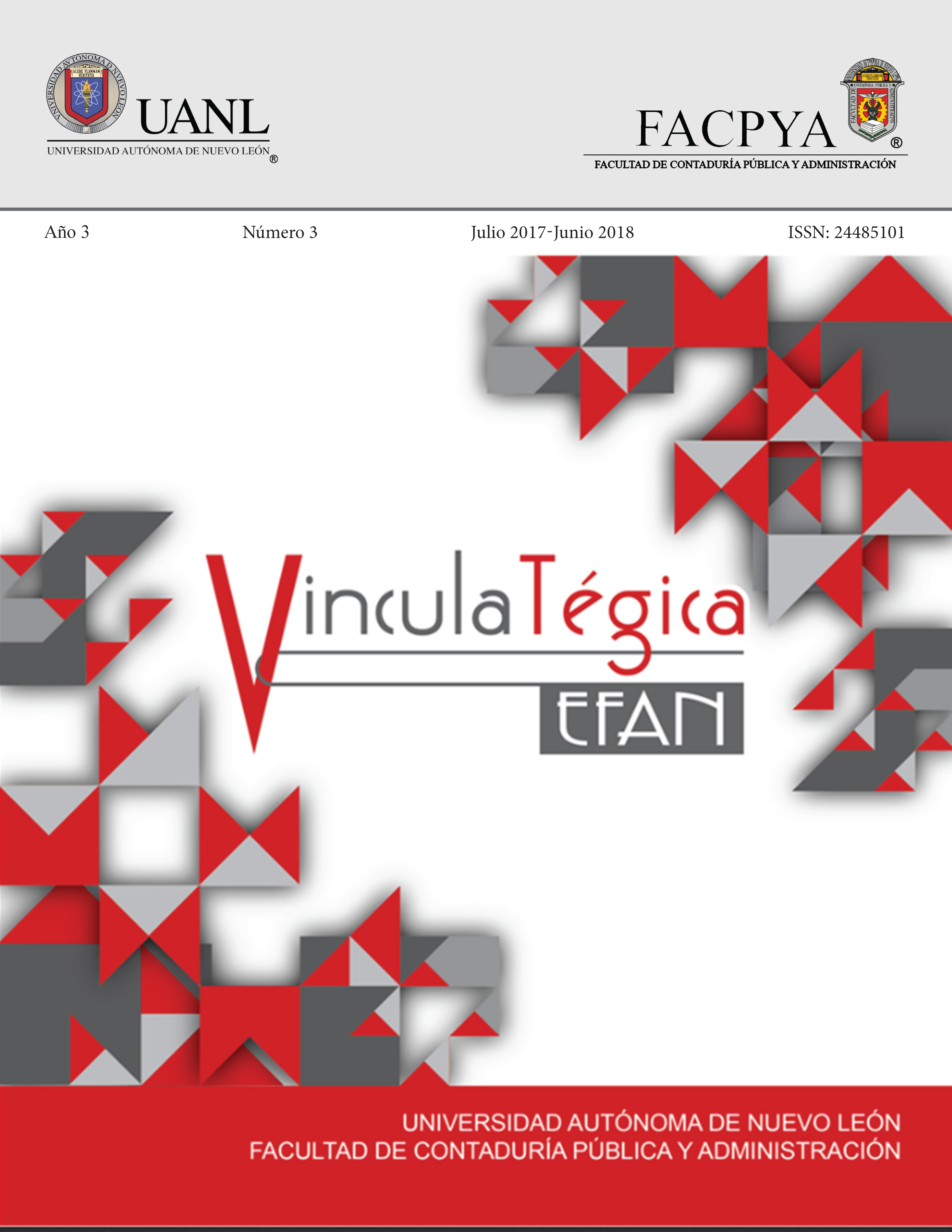Estilos de liderazgo en una empresa manufacturera de Ciudad Victoria, Tamaulipas
DOI:
https://doi.org/10.29105/vtga3.3-1126Keywords:
leadership, transformational, transactional, no leadershipAbstract
Organizations are not usually formed accidentally or spontaneously, they are created by people who have a vision of the future project. The issue of leadership emerges as a clear possibility of fostering human relations centered on the different relational aspects. The present research raises the fundamental need to know specifically the leadership style that the middle managers have within the organization, in this case of the manufacturing company denominated as ALPHA I. The study is conformed by a sample of 161 persons they occupying operational levelsand 9 supervisors. Data analysis is performed using descriptive statistics. The results obtained determine that the predominant style of leadership for this company is the transactional.
Downloads
References
Bass, B. (1985). Leadership and Performance Beyond Expectations. New York: The Free Press.
Bass, B. y Avolio, B. (1994). Re-examining the components of transformational and transactional leadership using the Multifactor Leadership Questionnaire. Journal of Occupational and Organizational Psychology.
Blake, R., y Mouton, J. (1964). The managerial grid. Houston, Tx: Gulf.
Cea D´Ancona, M.A. (2014). Metodología cuantitativa: Estrategias y técnicas de la investigación social. Madrid: Sintesis.
Chiavenato, I. (2006). Introducción a la teoría general de la administración. México: McGraw-Hill.
Chiavenato, I. (2009). Comportamiento organizacional. La dinámica del éxito en las organizaciones. México: McGraw Hill.
Goleman, D. (2005). Liderazgo que obtiene resultados. Harvard Business Review, 11, pp 125-140.
Hazy, J.K., Goldstein, J.A. y Lichtenstein, B.B. (2007). Complex systems leadership Theory. New perspectives from complexity science on social and organizational effectiveness. USA: ISCE Publishing.
Hernández, J. (2013). El liderazgo organizacional: Una aproximación desde la perspectiva etológica (Tesis para obtener el grado de Maestría). Universidad del Rosario, Bogotá.
Hérnandez, R., Fernández, C. y Baptista, P. (2006). Metodología de la investigación. México: McGraw-Hill.
Hersey, P. y Blanchard, K. (1996). Great ideas revisited. Training & Development, 50(1), pp. 42-47.
Lewin, K., Lippitt, R. y White. R. (1939). Conduct, knowledge, and acceptance of new values. The journal of social psychology, 10, pp. 271-299. DOI: https://doi.org/10.1080/00224545.1939.9713366
Mintzberg, H. (1983). La naturaleza del trabajo directivo. España: Editorial Ariel.
Pons, I. (1993). Programación de la investigación social. Cuadernos metodológicos. Madrid: Centro de Investigaciones Sociológicas (CIS).
Rincón, A. (2003). Mauro, el camino del líder, Cataluña: Robinbook, S.L.
Robbins, S. (2004). Comportamiento organizacional: Conceptos, controversias y aplicaciones. México: Prentice-Hall Hispanoamérica.
Robbins, S y Judge, T., (2009). Comportamiento Organizacional: Teoría y práctica. México: Pearson Educación.
Rodríguez, D. (2001). Gestión Organizacional: Elementos para su estudio. Santiago de Chile: Universidad Católica de Chile.
Stogdill, R.M., (1948). Personal factors associated with leadership; a survey of the literature. The journal of psychology, 25, pp. 35-71. DOI: https://doi.org/10.1080/00223980.1948.9917362
Uribe, M. (2005). El liderazgo docente en la construcción de la cultura escolar de calidad: un desafío de orden superior. Revista PRELAC, 1, pp 1-10.
Downloads
Published
How to Cite
Issue
Section
License

This work is licensed under a Creative Commons Attribution 4.0 International License.
a). Authors keep copyright and give the journal the right of the first publication of the work under a Creative Commons attribution license. This license allows others to share the work as long as original authorship and initial publication in this journal is acknowledged.
b). Authors may make other independent and additional contractual agreements for the non-exclusive distribution of the version of the article published in this journal (e.g., include it in an institutional repository or publish it in a book) as long as they clearly indicate that the work was published for the first time in this journal.







